Where is Armenia? Armenia is the smallest of the former Soviet
republics, bounded by Georgia to the north, Azerbaijan to the east,
Iran to the south, and Turkey to the west. Aremenia counts amongst
one of the world's oldest civilizations and once included Mount
Ararat, (now in modern day Turkey) the mountain identified in the
bible as being where Noah's ark rested after the flood. Under
Tigrane the Great (fl. 95-55 B.C.) the Armenian Empire reached its
height and became one of the most powerful in Asia, starching from
the Caspian to the Mediterranean Seas. Throughout most of its long
history, however, Armenia has been invaded by a succession of
conquerors- the Greeks, Romans, Persians, Byzantines, Mongols,
Arabs, Ottoman Turks, and the Russians.
From the 16th century through to World War I, significant parts of
Armenia were controlled by the Ottoman Turks, under whom they
experienced discrimination, religious persecution, heavy taxation,
and armed attacks. In response to Armenian nationalist stirrings,
the Turks massacred thousands of Armenians in 1894 and 1896. After
the Turkish defeat in World War I, the independent Republic of
Armenia was established on May 28, 1918, but survived only until
November 29, 1920, when it was annexed by the Soviet Army. On March
12, 1922, the Soviets joined Georgia, Armenia, and Azerbaijan to
form the Transcaucasian Soviet Socialist Republic, which became
part of the U.S.S.R. In 1936, after a reorganization, Armenia
became a separate constituent republic of the U.S.S.R.
Armenia declared its independence from the collapsing Soviet Union
on September 23, 1991. An Armenian Diaspora has existed throughout
the nation's history, and Armenian emigration has been
particularly heavy since independence from the Soviet Union. An
estimated 60% of the total eight million Armenians worldwide live
outside the country, with one million each in the U.S. and Russia.
Significant Armenian communities are located in Georgia, France,
Iran, Lebanon, Syria, Argentina, and Canada.
Armenia – acknowledged as one of the cradles of civilization – is a
beautiful country with a sophisticated people and a long and
cultured history. As a result, Armenia is an intriguing tourist
destination. Numerous monuments and masterpieces of the Ancient era
and Middle Ages can be found throughout the country. Tourism in
Armenia is rooted in the country's historical landmarks and
natural attractions such as the water resorts of Lake Seventh hot
springs of Arzni and Jermuk, the forests of Dilijan, Aghveran,
Tsaghkadzor, Bjurakan and Gugark, and the mountainous natural caves
and cliffs of the Southeast region. The 5165 meter Mount Ararat,
geographically located in Turkey, is a national symbol of Armenia
and is visible from much of the Southwest region.
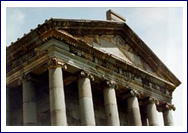
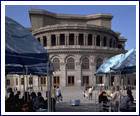 The majestic peaks of Mount Ararat provide a stunning
backdrop to Yerevan. The monastery of Khor-Virab and the ruins of
the ancient city of Dvin (dating back to the second century BC) are
located in the mid-distance Aerial view of Yerevan, capital of
Armenia Statue of Komitas, one of Armenia's most loved
composers, outside the Komitas Conservatory. Apart from writing
many original composition, Komitas travelled the country noting
down folk songs for posterity Yerevan, which is nestled in the
shadow of the snow-capped heights of the majestic mount Ararat,
where the Biblical Noah's Ark first landed escaping the Great
Flood, is the capital city of Armenia. With a population numbering
over 1.2 million, Yerevan is a bustling city. The central plaza,
Republic Square, is designed in the Armenian national style and
houses the Government House, the Cabinet and other governmental
offices as well as the Erebuni and Armenia hotels.
The majestic peaks of Mount Ararat provide a stunning
backdrop to Yerevan. The monastery of Khor-Virab and the ruins of
the ancient city of Dvin (dating back to the second century BC) are
located in the mid-distance Aerial view of Yerevan, capital of
Armenia Statue of Komitas, one of Armenia's most loved
composers, outside the Komitas Conservatory. Apart from writing
many original composition, Komitas travelled the country noting
down folk songs for posterity Yerevan, which is nestled in the
shadow of the snow-capped heights of the majestic mount Ararat,
where the Biblical Noah's Ark first landed escaping the Great
Flood, is the capital city of Armenia. With a population numbering
over 1.2 million, Yerevan is a bustling city. The central plaza,
Republic Square, is designed in the Armenian national style and
houses the Government House, the Cabinet and other governmental
offices as well as the Erebuni and Armenia hotels.
Also situated on Republic Square are the Armenian History Museum
and the Art Gallery of Armenia. Here, one finds informative and
interesting models and artefacts of ancient Urartu and Armenia. In
the Art Gallery one finds a worthy section on Armenian art from the
seventh century AD. Amongst the many other museums in the capital
city, the two most interesting house museums are those of landscape
artist Martiros Saryan (1880-1972) and twentieth century composer
Aram Khatchaturyan.
 Yerevan, the ancient capital of Armenia, extends you a
warm and friendly welcome. It is one of the oldest cities in the
world. The earliest recorded settlement there dates back to 782 BC.
King Argishty I founded a fortress city in the north-eastern part
of present-day Yerevan, with the following cuneiform inscription,
“With the majesty of God Khald, Argishty, son of Menua, built
up this inaccessible castle and named it Erebuni…” You can
still see relics from this part of our history at the Erebuni
Museum in Yerevan.
Yerevan, the ancient capital of Armenia, extends you a
warm and friendly welcome. It is one of the oldest cities in the
world. The earliest recorded settlement there dates back to 782 BC.
King Argishty I founded a fortress city in the north-eastern part
of present-day Yerevan, with the following cuneiform inscription,
“With the majesty of God Khald, Argishty, son of Menua, built
up this inaccessible castle and named it Erebuni…” You can
still see relics from this part of our history at the Erebuni
Museum in Yerevan.
 As you explore the many interesting sights in Yerevan, you will
learn about the culture and history of one of the world's
oldest nations.
As you explore the many interesting sights in Yerevan, you will
learn about the culture and history of one of the world's
oldest nations.
If you would like more information about Armenia, contact the
author of this article, Mr Mushegh Gevorgyan, who can assist with
tours, visas and translation services: tours@orient.am
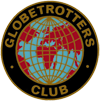

 The majestic peaks of Mount Ararat provide a stunning
backdrop to Yerevan. The monastery of Khor-Virab and the ruins of
the ancient city of Dvin (dating back to the second century BC) are
located in the mid-distance Aerial view of Yerevan, capital of
Armenia Statue of Komitas, one of Armenia's most loved
composers, outside the Komitas Conservatory. Apart from writing
many original composition, Komitas travelled the country noting
down folk songs for posterity Yerevan, which is nestled in the
shadow of the snow-capped heights of the majestic mount Ararat,
where the Biblical Noah's Ark first landed escaping the Great
Flood, is the capital city of Armenia. With a population numbering
over 1.2 million, Yerevan is a bustling city. The central plaza,
Republic Square, is designed in the Armenian national style and
houses the Government House, the Cabinet and other governmental
offices as well as the Erebuni and Armenia hotels.
The majestic peaks of Mount Ararat provide a stunning
backdrop to Yerevan. The monastery of Khor-Virab and the ruins of
the ancient city of Dvin (dating back to the second century BC) are
located in the mid-distance Aerial view of Yerevan, capital of
Armenia Statue of Komitas, one of Armenia's most loved
composers, outside the Komitas Conservatory. Apart from writing
many original composition, Komitas travelled the country noting
down folk songs for posterity Yerevan, which is nestled in the
shadow of the snow-capped heights of the majestic mount Ararat,
where the Biblical Noah's Ark first landed escaping the Great
Flood, is the capital city of Armenia. With a population numbering
over 1.2 million, Yerevan is a bustling city. The central plaza,
Republic Square, is designed in the Armenian national style and
houses the Government House, the Cabinet and other governmental
offices as well as the Erebuni and Armenia hotels.
 Yerevan, the ancient capital of Armenia, extends you a
warm and friendly welcome. It is one of the oldest cities in the
world. The earliest recorded settlement there dates back to 782 BC.
King Argishty I founded a fortress city in the north-eastern part
of present-day Yerevan, with the following cuneiform inscription,
“With the majesty of God Khald, Argishty, son of Menua, built
up this inaccessible castle and named it Erebuni…” You can
still see relics from this part of our history at the Erebuni
Museum in Yerevan.
Yerevan, the ancient capital of Armenia, extends you a
warm and friendly welcome. It is one of the oldest cities in the
world. The earliest recorded settlement there dates back to 782 BC.
King Argishty I founded a fortress city in the north-eastern part
of present-day Yerevan, with the following cuneiform inscription,
“With the majesty of God Khald, Argishty, son of Menua, built
up this inaccessible castle and named it Erebuni…” You can
still see relics from this part of our history at the Erebuni
Museum in Yerevan.
 As you explore the many interesting sights in Yerevan, you will
learn about the culture and history of one of the world's
oldest nations.
As you explore the many interesting sights in Yerevan, you will
learn about the culture and history of one of the world's
oldest nations.
 As part of our
time there we went to see a local group of women rehearsing
traditional Mozambique song (see picture, left). We were
merely walking by when we were invited to sit in on the group
during practice. Listening to the women and drums as the sun
set and the tide came in really will be a lasting memory of
my time spent in East Africa. Later that day we caught a dhow
(traditional African/Arabic sail boat) from Palma all the way
back to Mikindani. This again will stay with me for the rest
of my life as one of the most authentic experiences of the
lives people lead in this part of the world. These sorts of
experiences, however overused the cliché may be,
really are priceless. Money cannot buy memories and certainly
looking at the people of Palma or Mikindani, plays no part in
happiness or generosity. This sort of journey, away from the
beaten track and reach of the guidebooks is highly
recommended and, although not to everyone’s taste, will
provide lasting memories to anyone willing to embark on
them.
As part of our
time there we went to see a local group of women rehearsing
traditional Mozambique song (see picture, left). We were
merely walking by when we were invited to sit in on the group
during practice. Listening to the women and drums as the sun
set and the tide came in really will be a lasting memory of
my time spent in East Africa. Later that day we caught a dhow
(traditional African/Arabic sail boat) from Palma all the way
back to Mikindani. This again will stay with me for the rest
of my life as one of the most authentic experiences of the
lives people lead in this part of the world. These sorts of
experiences, however overused the cliché may be,
really are priceless. Money cannot buy memories and certainly
looking at the people of Palma or Mikindani, plays no part in
happiness or generosity. This sort of journey, away from the
beaten track and reach of the guidebooks is highly
recommended and, although not to everyone’s taste, will
provide lasting memories to anyone willing to embark on
them.
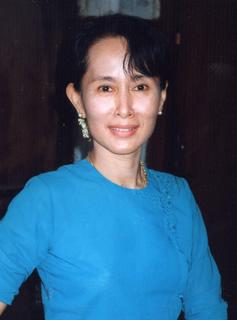 The fact is that the
call for a tourism boycott comes from Burma's elected
leaders. The National League for Democracy (NLD), who won a
landslide victory in Burma's 1990 election, remains the
only party mandated to represent the Burmese people and it is
a party that continues to draw the support and respect of
people inside and outside the country. Burma's Government
in exile, the National Coalition Government of the Union of
Burma (NCGUB), supports the boycott and it is a position that
has the backing of exile Burmese democracy groups around the
world.
The fact is that the
call for a tourism boycott comes from Burma's elected
leaders. The National League for Democracy (NLD), who won a
landslide victory in Burma's 1990 election, remains the
only party mandated to represent the Burmese people and it is
a party that continues to draw the support and respect of
people inside and outside the country. Burma's Government
in exile, the National Coalition Government of the Union of
Burma (NCGUB), supports the boycott and it is a position that
has the backing of exile Burmese democracy groups around the
world.
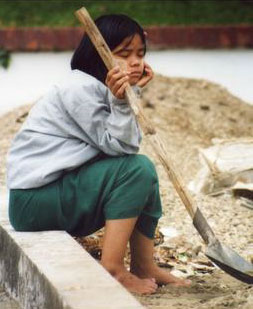 The article also fails to mention
that in Burma many human rights abuses are directly connected
to the regime's drive to develop the country for
tourists. Throughout Burma men, women and children have been
forced to labour on roads, railways and tourism projects;
more than one million people have been forced out of their
homes in order to 'beautify' cities, suppress
dissent, and make way for tourism developments, such as
hotels, airports and golf courses. And these abuses are not
confined to history. In February 2004, for example, Burmese
soldiers rounded up ethnic Salons, or 'sea gypsies'
who normally live on boats in the Mergui Archipelago, forced
them to live on land and to take part in a 'Salon
Festival' aimed at foreign tourists.
The article also fails to mention
that in Burma many human rights abuses are directly connected
to the regime's drive to develop the country for
tourists. Throughout Burma men, women and children have been
forced to labour on roads, railways and tourism projects;
more than one million people have been forced out of their
homes in order to 'beautify' cities, suppress
dissent, and make way for tourism developments, such as
hotels, airports and golf courses. And these abuses are not
confined to history. In February 2004, for example, Burmese
soldiers rounded up ethnic Salons, or 'sea gypsies'
who normally live on boats in the Mergui Archipelago, forced
them to live on land and to take part in a 'Salon
Festival' aimed at foreign tourists.
 A walk around
Mikindani shows little evidence of current military activity
but the historical signs are more common. The Mtwara airstrip
was an RAF base, the customs house was destroyed by naval
artillery and subsequent neglect, the splendid hotel is a
fortified building. The Boma is no great castle but would
have been a hard nut to crack. The crenulations (saw teeth
type things you get at the top of castles) on the bastion at
the back are wide enough to accommodate the large water
cooled barrel of the Maxim machine gun whilst those on the
tower could only fit a rifle. Both employed at the time of
construction.
A walk around
Mikindani shows little evidence of current military activity
but the historical signs are more common. The Mtwara airstrip
was an RAF base, the customs house was destroyed by naval
artillery and subsequent neglect, the splendid hotel is a
fortified building. The Boma is no great castle but would
have been a hard nut to crack. The crenulations (saw teeth
type things you get at the top of castles) on the bastion at
the back are wide enough to accommodate the large water
cooled barrel of the Maxim machine gun whilst those on the
tower could only fit a rifle. Both employed at the time of
construction.